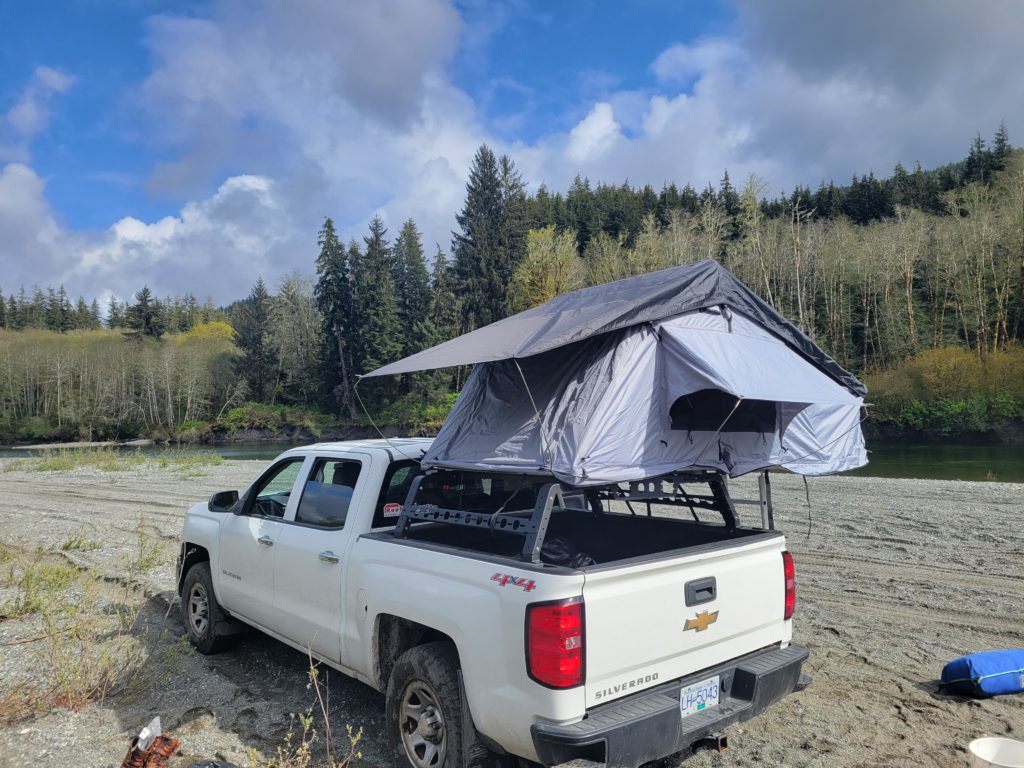If you’re considering purchasing a rooftop tent, one of the first things you’ll want to know is how much it weighs. All rooftop tents have a weight limit. Distributing the weight evenly across your vehicle is important for your safety and the longevity of your rooftop tent. In this article, we’ll discuss everything there is to know about rooftop tent weights and how to distribute them correctly on your vehicle.
How Much Do Rooftop Tents Weigh?
Rooftop tents typically weigh at least 100lbs. The weight of your tent will depend on the size, materials, and features of the model you choose. For example, a smaller tent made with lightweight materials will weigh less than a larger tent made with heavier materials. When choosing a rooftop tent, ensure to consider the weight of the tent and of any gear you’ll carry inside.

Do Rooftop Tents Have a Weight Limit?
Yes, rooftop tents do have a weight limit. This includes the tent’s weight, any gear you’re carrying inside it, and any occupants. There’s no general rule of thumb for how much weight all RTTs are to support. However, most rooftop tent companies estimate an average weight of about 200 lbs per camper. So, if you have a tent designed for two people, you can usually assume that it can support a maximum of about 400lbs of weight.
The weight limit of a rooftop tent is just one factor you should consider before installing your RTT. Another thing to consider is your roof rack weight limit. You need first to determine how much weight your vehicle and the roof racks you’ll mount the tent on can support since a rooftop tent is to be mounted on a vehicle. You will see how much weight your roof rack can handle on your owner’s manual.
Lastly, you need to determine how much your rooftop tent weighs and how much weight you plan to put into it. This includes the weight of each occupant, plus an additional 20 pounds or so for sleeping bags, clothing, and other gear. If the combined weight is less than the total weight your racks and car can support, then you’re good to go!
Static Vs. Dynamic Weight
Before use, you need to confirm your vehicle’s dynamic and static weight capacity. Static weight is the dead weight of the rooftop tent when it is not in motion. This includes the weight of the materials, frame, and any permanently attached accessories to the tent. For example, a rooftop tent that weighs 100lbs static would be the same weight whether it’s being used or not.
Dynamic weight capacity is the maximum weight that the rack can handle while the vehicle is in motion. This includes the static weight of the rooftop tent and any additional weight from people or gear using it. So if you’re carrying a 150-pound RTT, the DWC needs to be at least 150 pounds or more.

While the static weight of rooftop tents can vary widely, the dynamic weight will always be more. That’s why it’s important to make sure your vehicle can handle the additional weight of a rooftop tent before you buy one. The last thing you want is to have your vehicle become overloaded and unsafe to drive.
How is Rooftop Tent Weight Distributed on Your Vehicle?
When it comes to rooftop tents, the weight is distributed in two ways. Either evenly across the length of the crossbars or concentrated at one point on the roof rack. To ensure the weight of a rooftop tent is appropriately distributed, you have to be sure that your crossbars can handle the load, and they have to be spaced apart properly. If improper crossbars are used, they may bend or strain under the weight. Thereby reducing their ability to spread the weight properly. Similarly, improperly spaced crossbars place greater strain on specific areas of your roof rack which they might not be designed to handle.
Specific mounting points for the crossbars are usually based on where the strongest points of the roof are located. If installed at different distances apart, your rack would have an unknown weight capacity. And this can damage the rack or the vehicle roof.
Always refer to the manufacturer’s instructions for the roof rack to ensure they’re properly installed.
Conclusion
Now that you know everything there is to know about rooftop tent weights and their distribution on your vehicle, you can make sure that your next camping trip is safe and enjoyable. Be sure to follow all the manufacturer’s instructions when installing your roof rack. And always distribute the rooftop tent weights evenly to avoid any damage.
At RoofTopTents.ca, we are confident that we have the right rooftop tents for you and your family, no matter what kind of trip you have in mind. Contact us at info@rooftoptents.ca today to take the first step in starting your next adventure!


